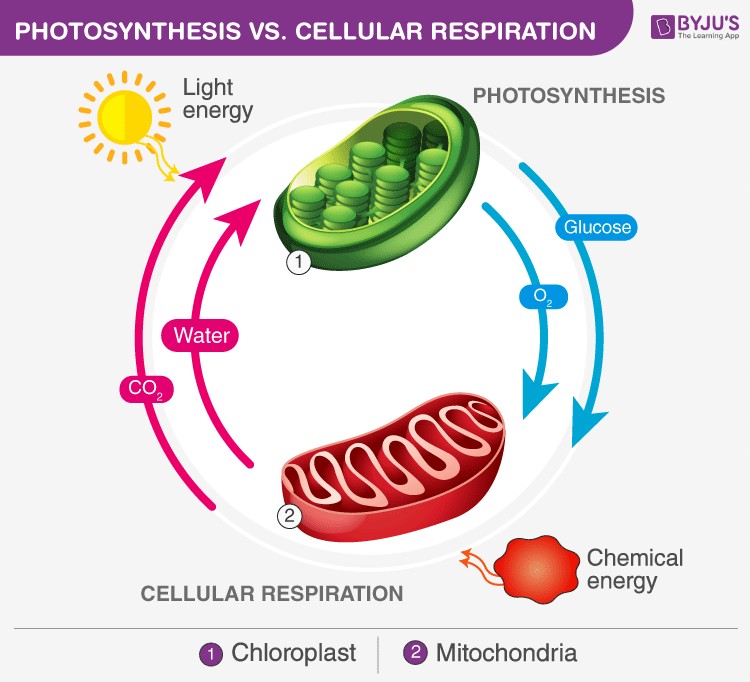Cellular respiration and photosynthesis are fundamental biological processes that are interconnected and crucial for life on Earth. While they are often described as the reverse of each other, there are key differences between them. This article will delve into the distinct characteristics of each process, highlighting what sets cellular respiration apart from photosynthesis.
 Photosynthesis and Cellular Respiration
Photosynthesis and Cellular Respiration
Location and Participants: Where and Who’s Involved
One of the primary distinctions lies in where these processes occur and which organisms participate. Cellular respiration takes place in the mitochondria of all living organisms, both plants and animals. It’s a universal process essential for energy production. Conversely, photosynthesis is restricted to phototrophs, which include plants, algae, and some bacteria. These organisms contain specialized organelles called chloroplasts, the site where photosynthesis unfolds.
Reactants and Products: The Ingredients and Outcomes
The inputs and outputs of these processes are also reversed. Cellular respiration utilizes glucose (a sugar) and oxygen as reactants, breaking them down to generate energy in the form of ATP (adenosine triphosphate). The byproducts of this process are carbon dioxide and water. Photosynthesis, on the other hand, requires carbon dioxide, water, and light energy as inputs. It converts these into glucose (food for the plant) and oxygen, which is released as a byproduct.
Energy Flow: Release vs. Capture
Cellular respiration is a catabolic process, meaning it breaks down complex molecules into simpler ones, releasing energy in the process. This released energy is then used to power various cellular activities. Photosynthesis, conversely, is an anabolic process. It uses light energy to build complex glucose molecules from simpler precursors, effectively storing energy within the chemical bonds of the glucose.
The Role of Sunlight: Dependence vs. Independence
Photosynthesis is directly dependent on sunlight to provide the energy needed for the process to occur. Without sunlight, photosynthesis cannot proceed. Cellular respiration, however, does not require sunlight. It occurs continuously, day and night, in all living cells to provide a constant supply of energy.
Chemical Equations: A Summary of Transformations
The chemical equations for these processes succinctly summarize the transformations involved:
- Cellular Respiration: C6H12O6 + 6O2 → 6CO2 + 6H2O
- Photosynthesis: 6CO2 + 6H2O → C6H12O6 + 6O2
These equations clearly demonstrate the reciprocal nature of the two processes and highlight the exchange of oxygen and carbon dioxide between them.
Conclusion: Two Sides of the Same Coin
Cellular respiration and photosynthesis are two intertwined processes that are essential for maintaining life on Earth. While they are fundamentally different in their location, reactants, products, and energy flow, they are interconnected and depend on each other for the cycling of essential molecules and the flow of energy through ecosystems. Understanding these differences provides a deeper appreciation for the intricate workings of the natural world.
